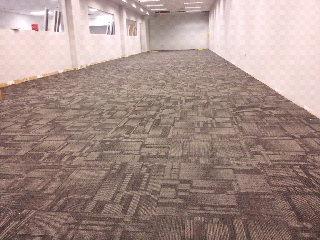Commercial real estate is experiencing a fundamental, disruptive and well-overdue shift. People entering the workforce today have a completely different concept of work and the space in which they work than when I began my career, more than 40 years ago. They’re younger than they have ever been, more tech savvy and globally aware with social media consciousness baked into their DNA.
Back when I started, I worked hard during the day and spent evenings and weekends socializing. I believe that today’s workforce goes to work to socialize, as they have the ability to work 24 hours a day, seven days a week from anywhere they are located. As the habit of the workforce changes, space available for lease must adjust to the work and social needs of this “new worker,” or go unrented.
Companies must develop new ways to allocate space as the traditional office becomes obsolete —new floor plans within old spaces designed for new work habits – to cater to employee needs and eliminate costly reconstruction. No longer do employees require “the accoutrements of success” (i.e. large offices) to bolster their egos.
Recently, I have witnessed corporations such as BP and United Airlines relocate from the suburbs to the city in order to build the best employee base possible. It is also rumored that Sears and Kraft are considering moving back to the city. If brought to fruition, these moves will help the companies regain the culture imperative to their success. I think that one thread runs throughout successful relocations: Space that reflects the culture, values and ethos of the company itself. Perhaps Sears should consider moving to its former headquarters at Homen and Arthington? Sara Lee has made a bold and smart move with its recently announced relocation from Downers Grove back to the city, repurposing the 400 South Jefferson building.
For a period of time in the ‘80s and ‘90s, corporations lost track of the need for the workplace to reflect the values and culture of a company. I cannot tell you how many CFOs and real estate directors only asked one question—“Where is the best deal?” The bottom line today does not only equate to the cheapest cost per square foot but must relate to the market value of the company.
A new formula
My colleagues and I have developed a formula, RV (Real Value) = MV (Market Value) x SV (Symbolic Value). In other words, the cost of office space must take into consideration the dynamics of the real estate market in addition to the Symbolic Value of a space. No longer can we judge the value of space by the old “per square foot” metric. Today, we need to look at the real value of the full spectrum of issues that make up the fiscal and cultural well-being of a business. Only then can a judgment be made as to the Real Value of any particular space.
The future of office space
Zappos is repurposing the old City Hall building in a blighted area of downtown Las Vegas and Google took over the former New York Port Authority building in the Meat Packing District of New York City. Forward-thinking companies will follow suit and continue to find older buildings to repurpose at favorable prices. In conjunction with organizations such as ArtPlace, which aims to develop creative space use to enliven communities, developers will gain long-term potential for successful real estate development.
It is my opinion that, after the non-traditional spaces start to be absorbed, companies will begin to repurpose iconic buildings, such as the Willis Tower. To succeed, ownership of these buildings will be charged with facilitating alternative uses of their traditional office space. Companies that will boom in the coming years are those that are comprised of the new employee—tech savvy, young, socially conscious—and are choosing homes for their businesses that reflect the needs of these employees and which rise to their cultural demands.
Howard Ecker is CEO and President of Howard Ecker + Company, a commercial tenant representation company. He can be reached at howard@howardecker.com







